11 Types of Oranges (and How to Use Them!)
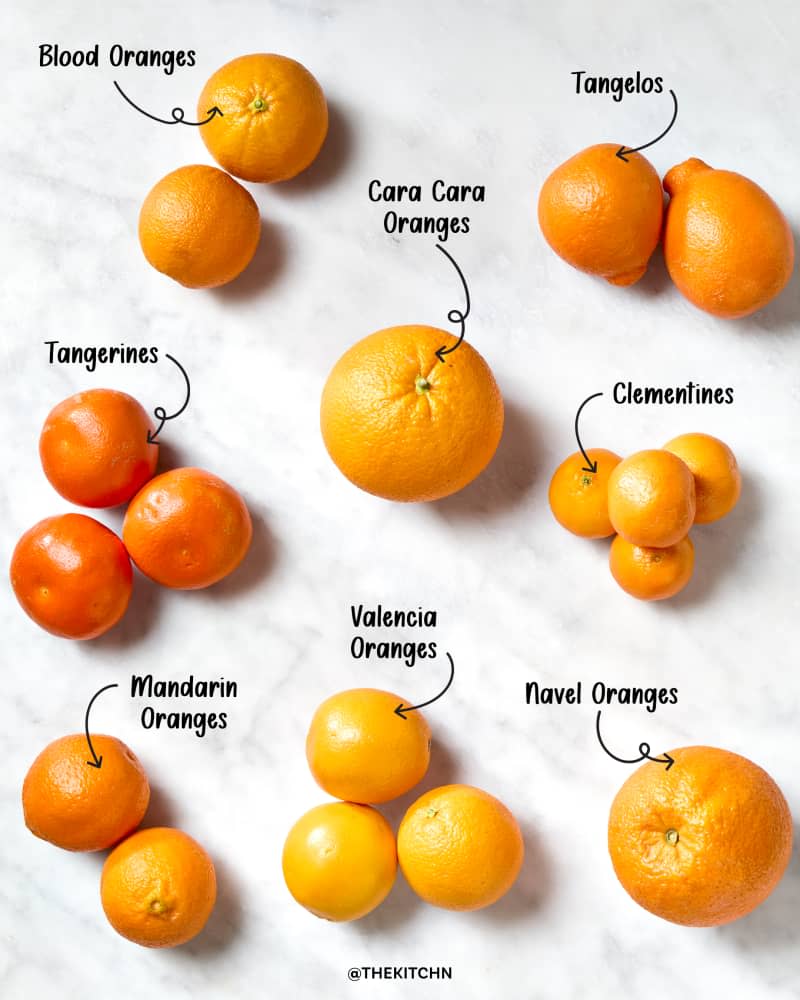
Table of Contents
We love oranges for about a million reasons. The citrus fruit is super rich in vitamin C and folate, and adding it to your diet offers plenty of health benefits (including helping to boost your immune system!). Beyond eating them (or drinking their juice) fresh, they’re amazing in baked goods, dressings, sauces, marmalades, and more.
But not all oranges are created equal. There are more than 400 varieties grown around the world, and each type is unique — from its level of juiciness, sweetness, and tartness to what it’s best used for.
To get you more familiar, we’ve come up with a guide to oranges you’ll often see at grocery stores and farmers markets. This will help you navigate which variety to buy and use through the citrus season, which runs from October through May. And if you happen to buy more, don’t worry — you can keep oranges at room temperature or refrigerate them to prolong the freshness.
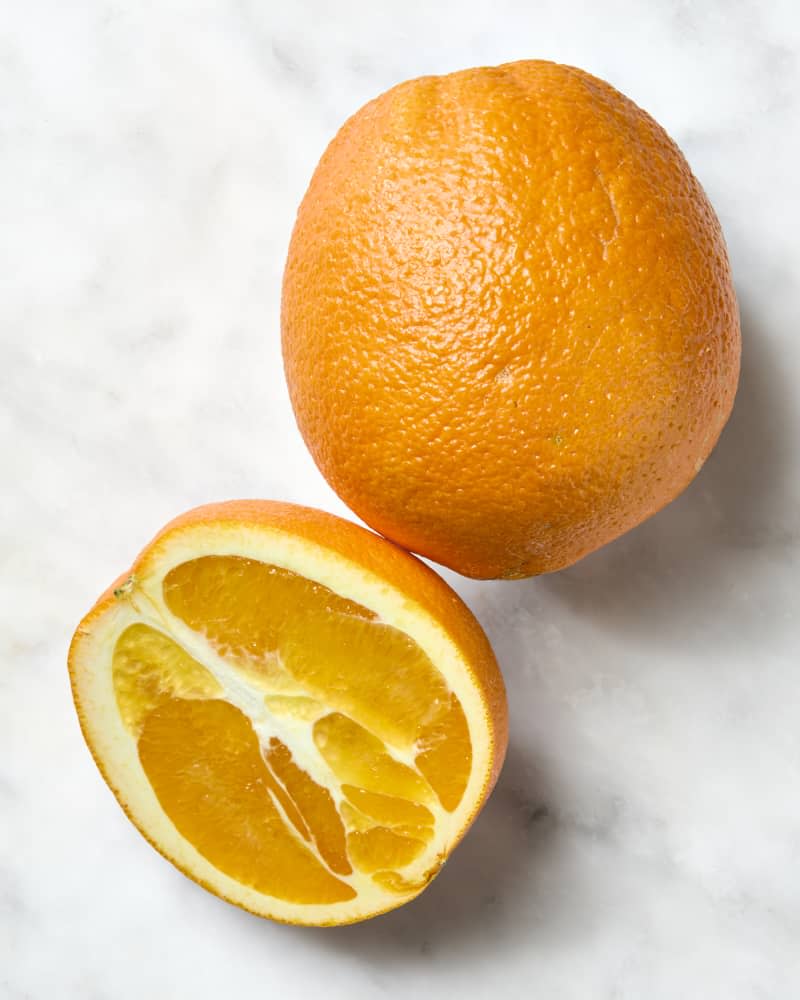
Navel
Navel oranges are easy to identify: They have a navel-like mark, resembling a belly button, on the bottom, and a translucent yellow-orange flesh.
Taste: Navel oranges are sweet, aromatic, and mildly acidic.
How to use them: Seedless and easy-to-peel, these oranges make a great on-the-go snack. Don’t throw the rind! You can zest the top layer of the skin and add it in baked goods, salads, dressings, and marinades to brighten up a dish, or use a vegetable peeler to create swirls of orange peel for garnishes.
Peak season: Navel oranges are typically in season from November to June, and the biggest growers are Brazil, California, Florida, Arizona, China, and India.
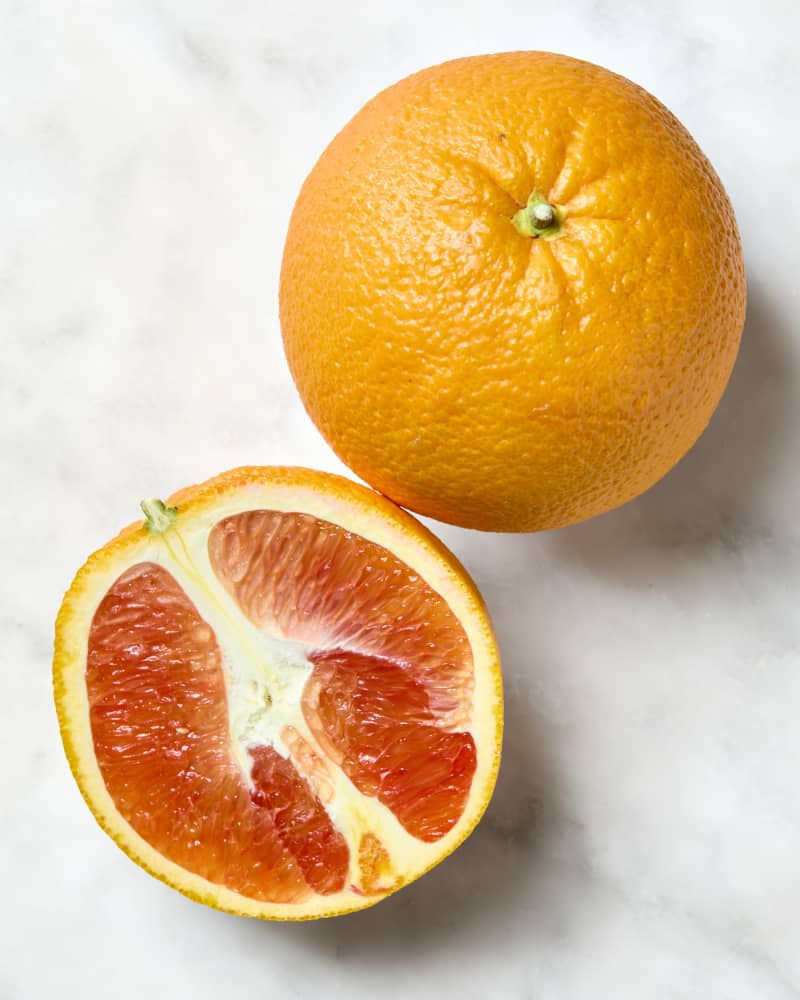
Cara Cara
A cross between the Washington navel and Brazilian Bahia, Cara Cara oranges are a result of a mutation in the navel orange that was first discovered in the mid-’70s in Valencia, Venezuela. From the outside, identifying a Cara Cara orange can be tricky — they’re similar in size to a navel orange and they have a bright orange rind. What makes them stand out is their distinct red-pink flesh that resembles a Ruby red grapefruit.
Taste: These seedless oranges are extra sweet, slightly tangy, and less acidic, with hints of cranberry, blackberry, and rose.
How to use them: They not only make a good snack, but also add color to fruit bowls, salads, and cookies. They’re also ideal for making fresh-squeezed orange juice, smoothies, and cocktails.
Peak season: Enjoy them at their peak season from December to April.
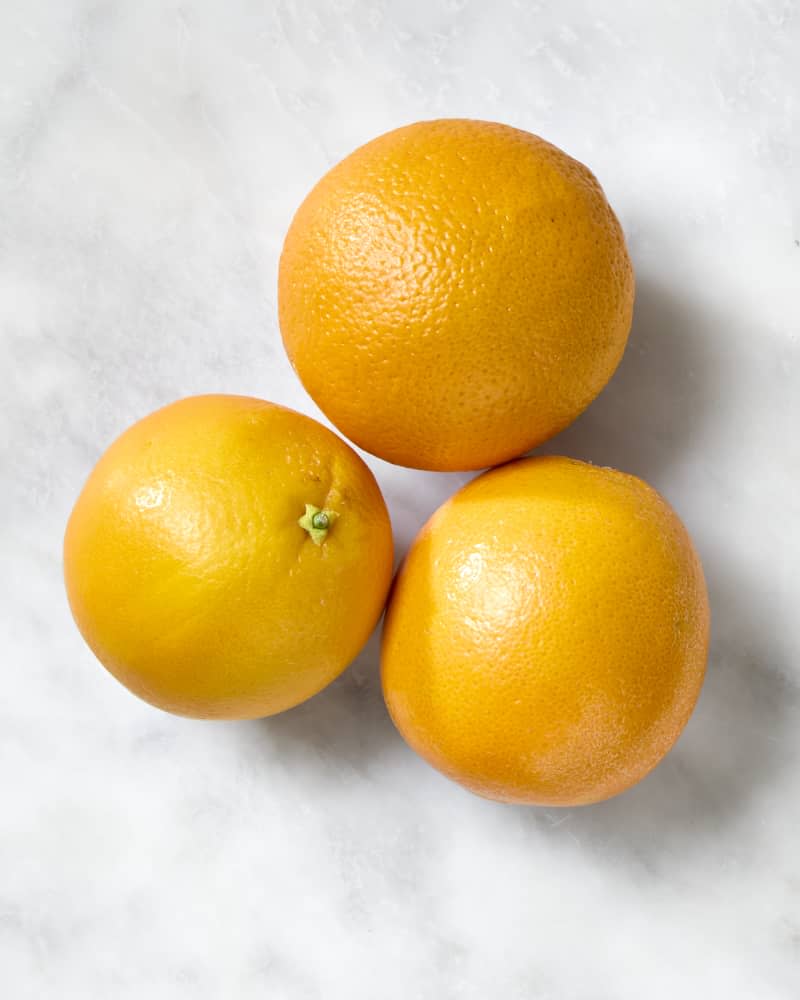
Valencia
A hybrid of a mandarin and a pomelo, the Valencia variety has tons of juice so you get more bang for your buck when it comes to making a fresh glass. When you juice them, they won’t turn bitter like the navel variety; they taste well-balanced and sweet-tart instead.
How to use them: Aside from juicing, their flesh can be eaten raw as part of a salad or made into cocktails. They’re also great for snacking, with easy-to-peel thin skins (although keep an eye out for seeds inside).
Peak season: Despite being named after the city of Valencia, Spain, Valencia oranges are native to California. Today the state remains one of the biggest growers, followed by Florida. They’re mostly harvested in the summer from March through July.
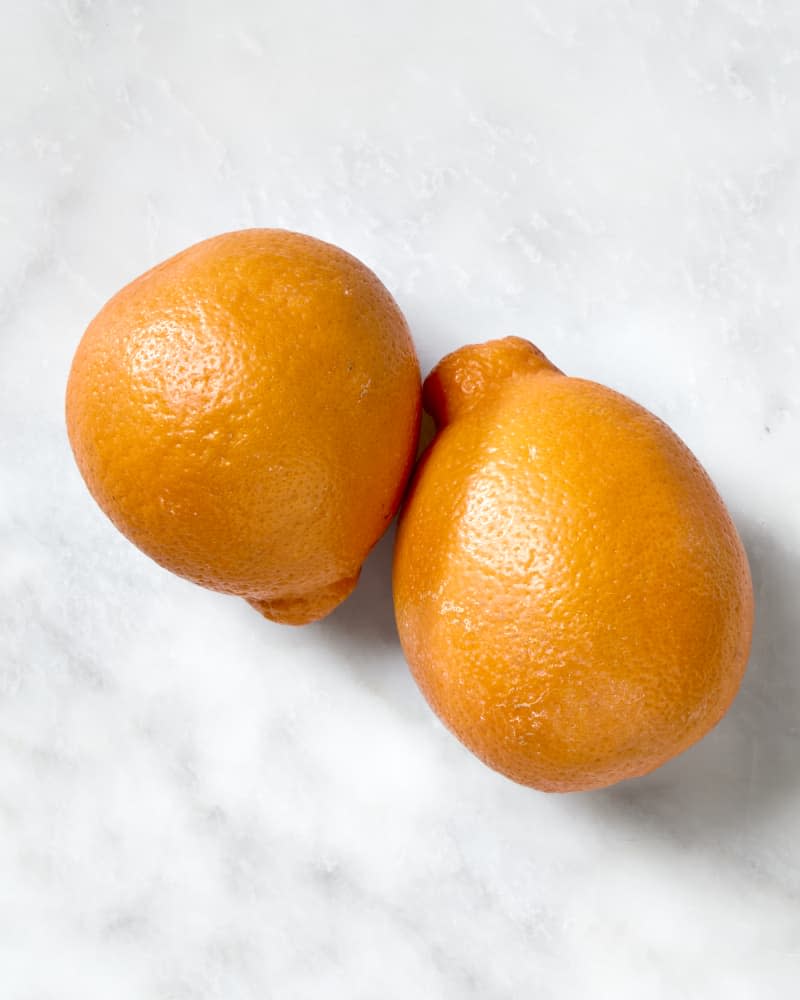
Tangelo
The moniker “tangelo” combines words tangerine and pomelo, because this variety is a cross between a Darcy tangerine and a pomelo or grapefruit. It looks oddly shaped for its protruding knob, or so-called “nipple,” at the top, and is the size of an adult first. Peel its loose and thin skin and you’ll find thick, juicy pulp inside when you bite into it.
How to use them: While it has medium levels of acidity, it has a honey-like sweetness from a tangerine with a tart, tangy, flowery taste from a pomelo. Tangelos can be eaten on their own as a snack or in a salad or salsa. Its juice can be used for cocktails or marinades.
Peak season: When buying, look out for a nice orange color, firm skin, and no brown spots or bruises. Tangelos are in season between December and March, and popular varieties, including the Orlando and Minneola, are produced in California, Florida, Arizona, Brazil, and Jamaica.
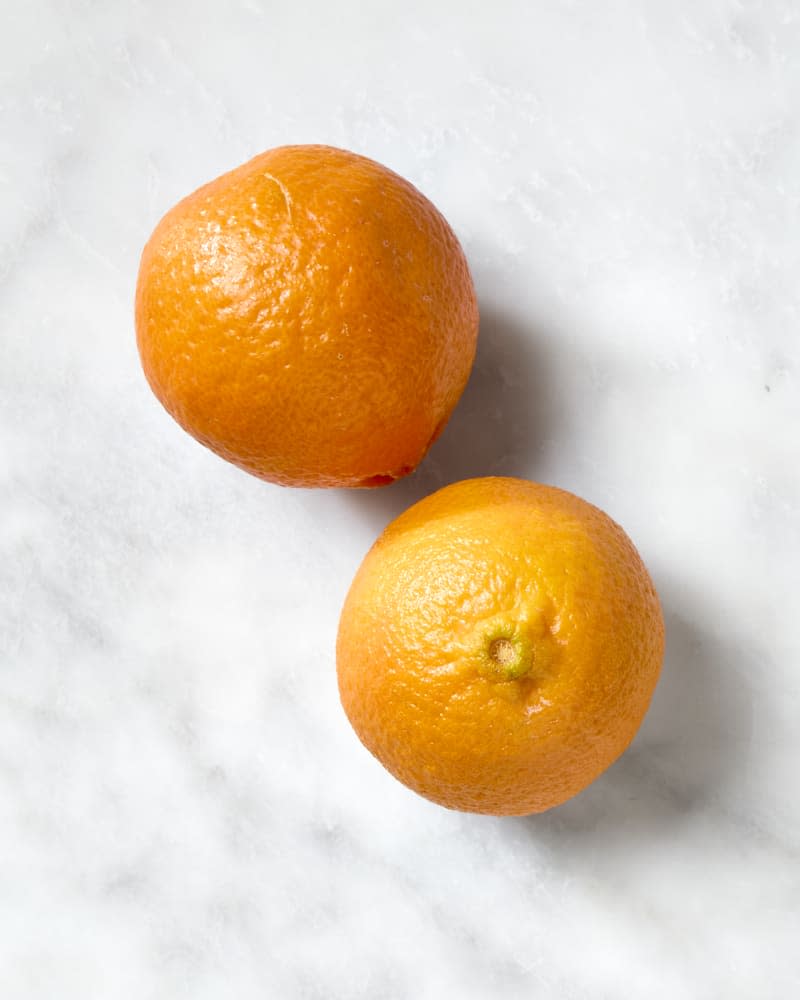
Mandarin
Mandarin oranges are considered a winter fruit, and they are abundant especially around Lunar New Year. A significant fruit in Chinese culture, they have become an important symbol of the festivities. Their deep orange color and oblate or spherical shape are considered auspicious, symbolizing wealth and good fortune.
How to use them: Mandarins are enjoyable to eat on their own. Because they’re small, you can easily pop your thumb in the bottom and literally zip the skin out and conveniently eat them anywhere when hunger strikes. When ripe, they have a soft texture, sweet and strong, and appear heavier for their size. They also make a great addition to salads and snack boards.
Peak season: Mandarin oranges are in peak season from November to March. Take note there are nearly 200 varieties of mandarins, including clementine, Tachibana, Satsuma, and Kishu Mikan.
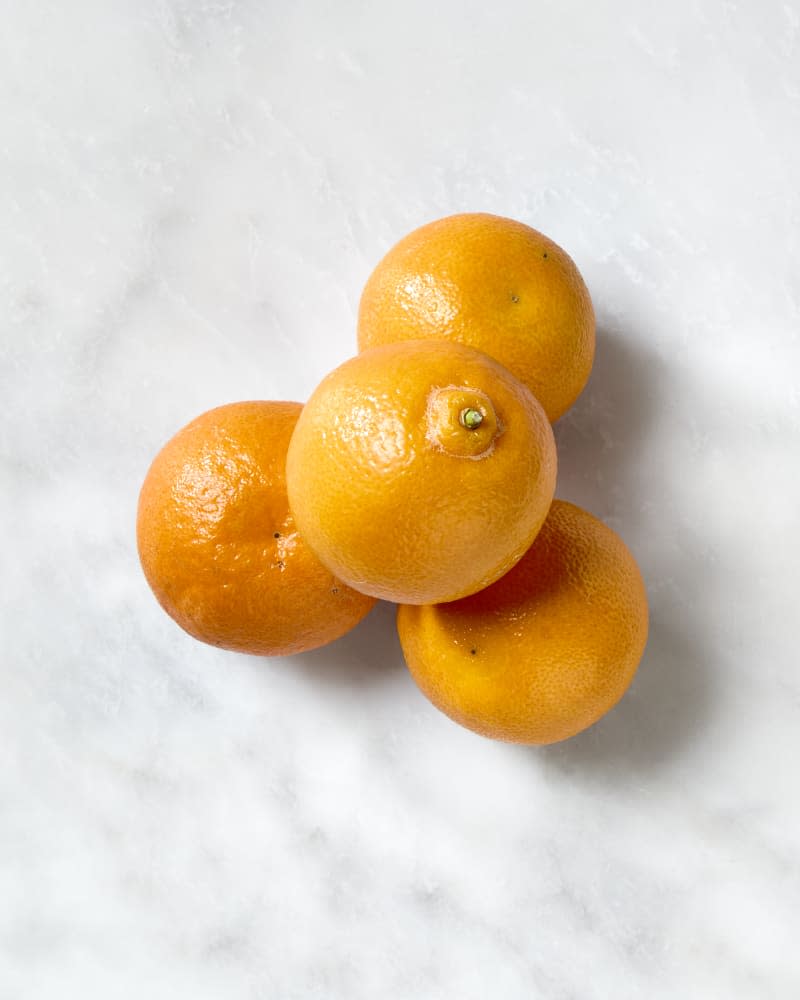
Clementine
A variety of mandarin, clementines are a cross between a Mandarin and a sweet orange, with a slightly more oval shape and a flat spot on the top and bottom.
How to use them: A popular snack for children, they’re often labeled in the U.S. as “Cuties” or “Sweeties” because of their bite-size nature. Thanks to their brighter, shinier, and smoother skin, they are easy to peel and separate into segments. They are also typically seedless, with a slightly sweeter taste than tangerines. They’re great for chocolate fondue.
Peak season: Clementines are more cold-tolerant than larger orange varieties, so they are widely available from October through January.
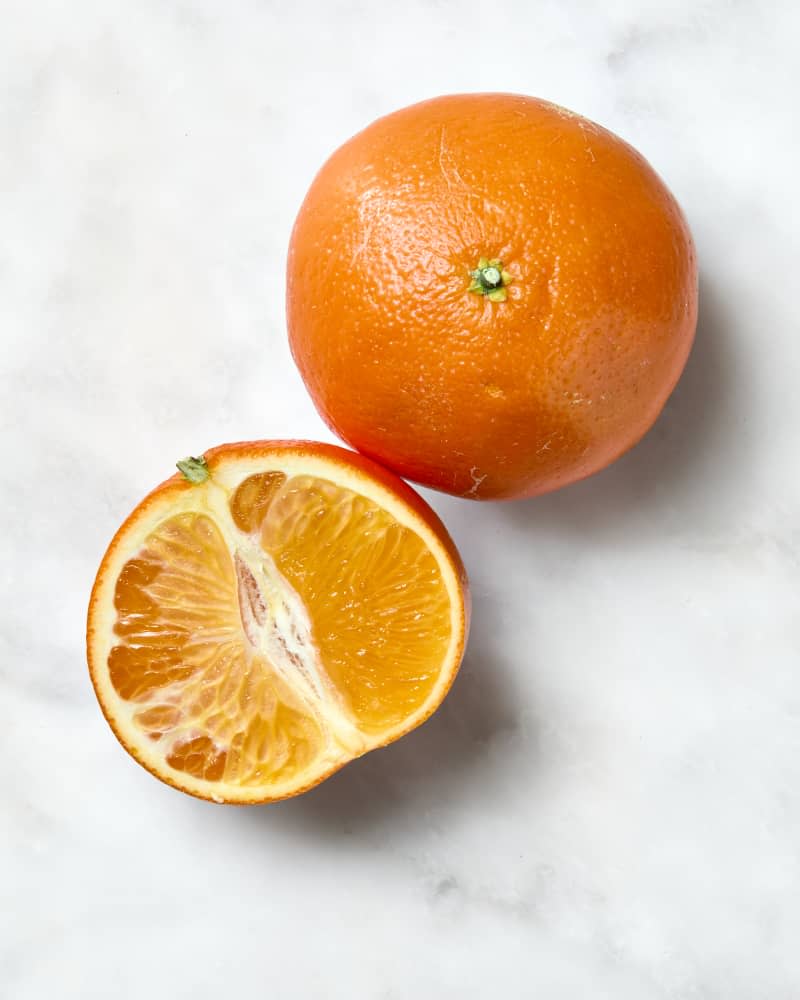
Tangerine
Don’t get tangerines confused with clementines. Tangerines, a variety of mandarin, are slightly bigger than clementines. They have a darker reddish-orange color, slightly tougher skin, and little to no seeds. With a juicy, richly flavored pulp, they have a honey-like sweetness to them.
How to use them: They seem to be more substantial, with a decent amount of fruit, compared to those teeny-tiny clementines. Their loose, easy-to-peel skin makes them a great choice for snacking, making curds and salad dressing, juicing, and baking. They are also great additions to winter salads and mimosas.
Peak season: Find them in grocery stores from October through January.
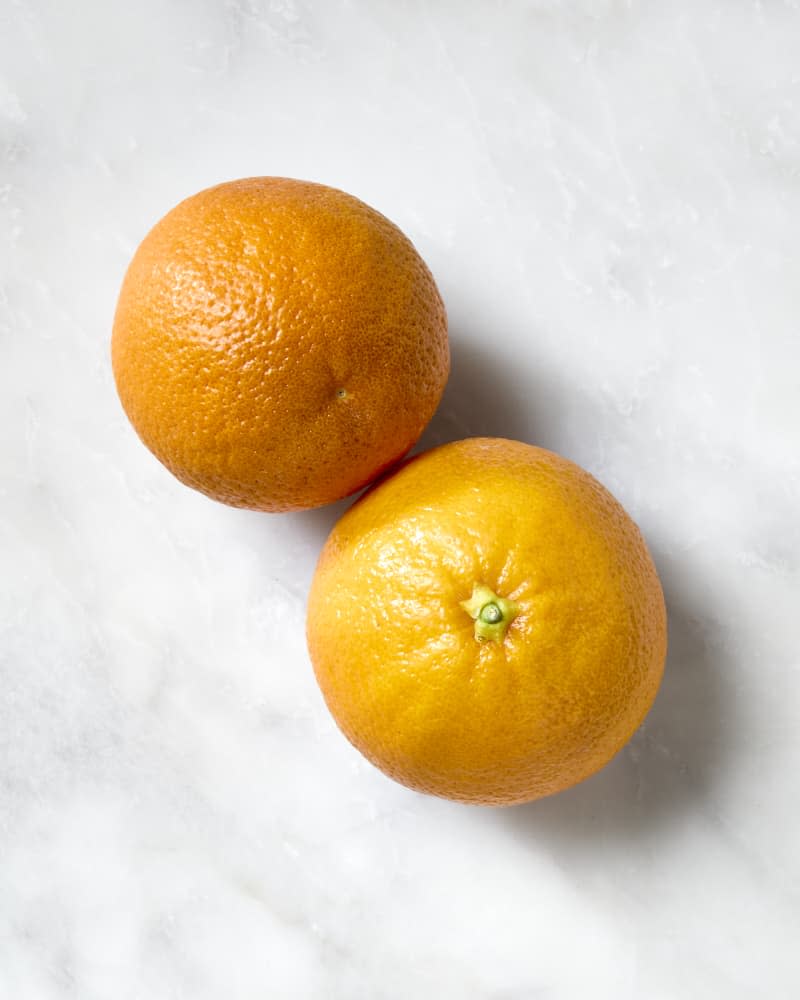
Blood Orange
A hybrid of the pomelo and the tangerine, blood oranges, originally from the southern Mediterranean region, are easily distinguishable with the red splotches on their skin.
Cut in half and you’ll find crimson, maroon, or near blood-colored flesh inside. Don’t confuse this beauty with Cara Cara; the red color is due to the presence of anthocyanin, the pigment that develops at a low temperature during the night.
How to use them: While it has a tougher rind to peel, these oranges are well worth the effort, as they are quite succulent, with a taste that’s a cross between tart navel oranges and ripe raspberry, with a hint of floral notes. They are a popular ingredient in juicing because of their ample juice, and making show-stopping desserts, such as blood orange olive oil cake; sauces; and margaritas, such as spicy-cool blood orange-jalapeño margaritas.
Peak season: They can be found on display from December through May, but mostly during their peak season from February to March. The largest growers are Italy, Spain, Australia, and California.
Seville
Also known as bitter oranges, Seville oranges have an intensely tart flavor and are higher in acidity. They also have an unusually high pectin content, which acts as a thickening agent.
How to use them: If you’re thinking of making a traditional marmalade, choose Seville oranges. Seville oranges are very rarely eaten raw, so their rind, juice, and zest are primarily used in cooking and for making dressings, marinades, sauces, and even a fortified wine.
Peak season: They are mostly produced in Spain, where it was first introduced in the 10th century.
Lima
If most oranges are too acidic for you, then the Lima variety is for you. Also called sweet oranges or acidless oranges, Lima oranges are known for their low acidity and extremely sweet flavor. And because they have minimal acidity, these oranges have almost no tartness.
Slightly smaller than other oranges with a slightly flattened shape, lima oranges have smooth, thin, easy-to-peel skin. When cut open, you’ll find a bright yellow-orange flesh that’s juicy and extremely sweet.
How to use them: Like many other varieties, Lima oranges make a great snack. They can also be used in salads, cocktails, or marinades. When buying, make sure to consume Lima oranges as soon as possible because their low acid levels mean they have a shorter shelf life.
Peak season: Lima oranges are in season from late winter to early spring. Today, these oranges can be found growing in several locations, including California, Florida, Brazil, Egypt, Mexico, and Spain.
Bergamot
Bergamot, aka Citrus bergamia Risso, is probably the least popular among the rest of common orange varieties. That’s because its flesh is almost never consumed raw because it is bitter and sour.
What this fruit is really prized for is the orange’s rind. A sought-after part of the fruit, the yellow-green rind is a key ingredient in making Earl Grey tea. The rind has intensely fragrant oils, so the next time you sip a cup of Earl Grey and can’t figure out that unusual ingredient, that’s bergamot.
How to use them: This variety can also be used in preserves and marmalades.
Peak season: The Bergamot orange is in season from November to January.

